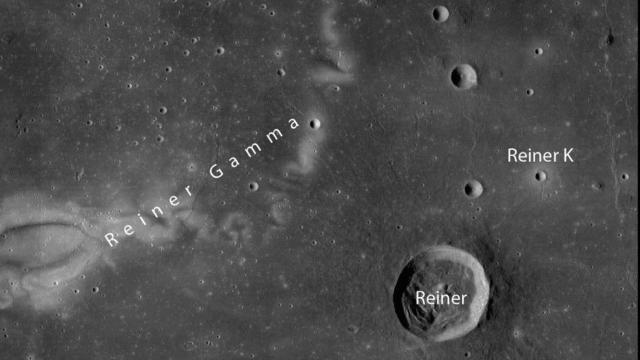Scientists scrutinising the fine dust covering the Moon have identified a handful of boulders on the lunar surface that they believe may be covered with uniquely magnetised dust.
The team used artificial intelligence to review around a million images of the lunar surface, all taken by NASA’s Lunar Reconnaissance Orbiter. The AI turned up 130,000 images of rocks with compelling features, half of which the researchers reviewed. Their research is published in the Journal of Geophysical Research: Planets.
On the Moon—a rocky satellite devoid of winds and erosion—dust is not just a powdery irritant. The crushed rock is still minuscule, like the stuff that causes our Earthly sneezes, but Moon dust is sharp and electrostatically charged. Poring over the images of boulders on the Moon, the researchers hoped to find a superlative rock that revealed newfound properties.
“We recognized a boulder with distinctive dark areas on just one image,” said Ottaviano Rüsch, a researcher at Westfälische Wilhelm Universität Münster, and the study’s lead author, in a university release. “This rock was very different from all the others, as it scatters less light back towards the sun than other rocks. We suspect that this is due to the particular dust structure, such as the density and grain size of the dust.”
The team concluded that the boulders were ejected when the crater Reiner K formed. Aside from their photometric properties—which is to say, how the dusty boulders looked compared to other Moon rocks—“these dust-covered boulders show no further difference with respect to other boulder,” the group wrote in the study.
“Normally, lunar dust is very porous and reflects a lot of light back in the direction of illumination,” said Marcel Hess, a researcher at TU Dortmund University and co-author of the study, in the release. “However, when the dust is compacted, the overall brightness usually increases. This is not the case with the observed dust-covered rocks.”
So what the heck is going on with this dust? The team isn’t quite sure, but the Lunar Vertex mission may have answers. The solar-powered lander is slated to explore over 1.2 miles of the Reiner Gamma region, where it will sample some of the magnetic properties on the lunar surface. If the lander focuses on the photometric behavior of the dust, the team wrote, it may clarify why the dust appears different to other lunar dust, in turn potentially revealing details of the Moon’s formation or impact history.
